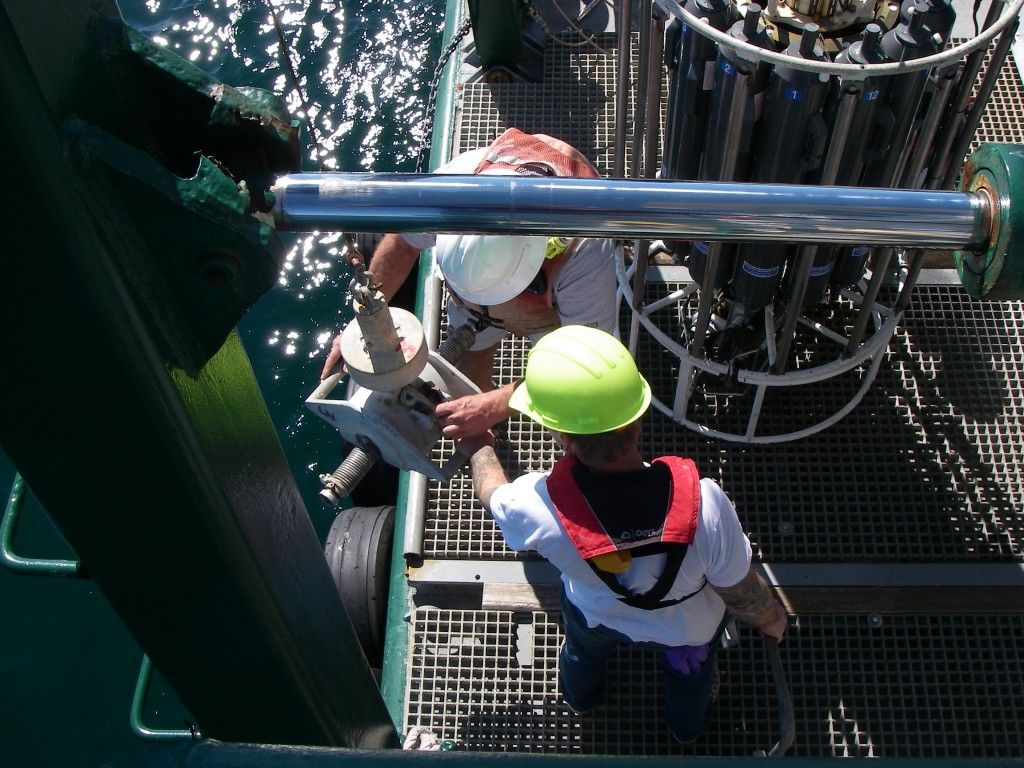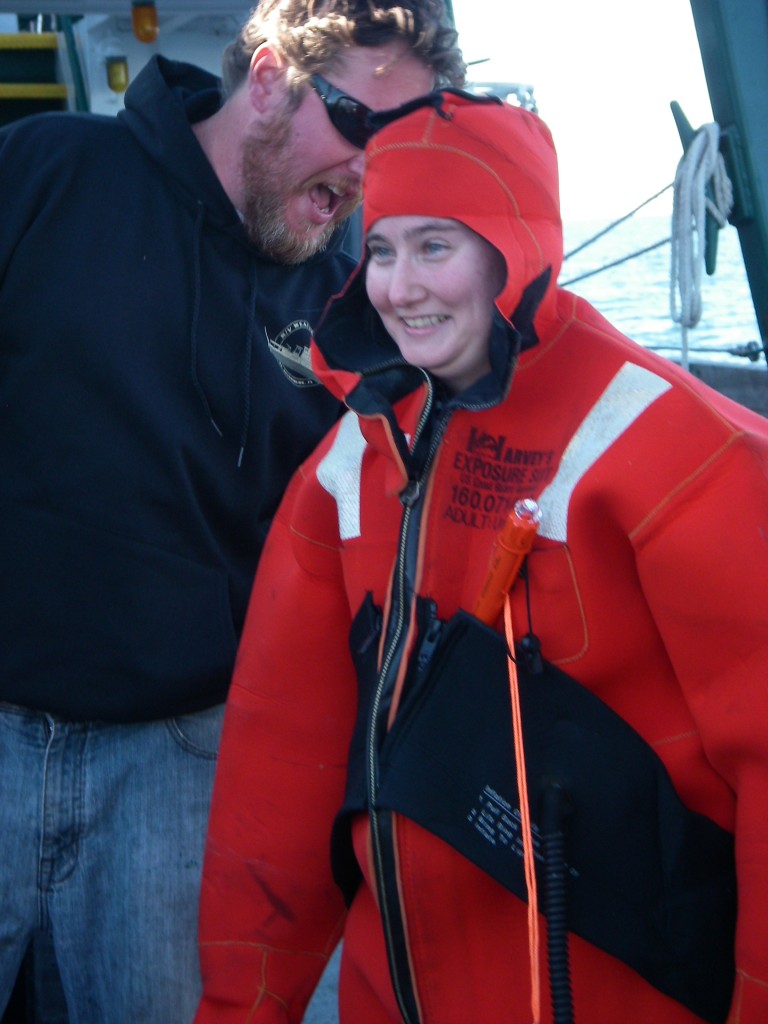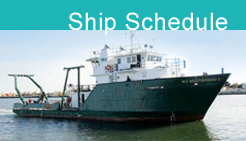Deep Sea Fish and Sediment Surveys in the Gulf
Exploring the Ocean Grazers: C-IMAGE Cruise Feb 2013
C-IMAGE Outreach & Communication
University of South Florida
In the coming days our team of C-IMAGE scientists from across Florida, led by Leslie Schwierzke-Wade of USF’s College of Marine Science, will be sampling at 13 locations off Florida’s northern Gulf Coast, including many sites we first visited in 2010 following the Deepwater Horizon blowout event. At each of these locations, we will collect seawater at depths ranging from the surface to 2300 meters in search of the ocean grazers at the lower end of the water column food web. These include the ocean’s small but mighty members: the recyclers—microbes, the primary producers—phytoplankton, and the primary consumers—zooplankton, including forams. Join us for daily blog posts highlighting our C-IMAGE science, people and life at sea. You can also follow us on the C-IMAGE Facebook page.
Cruise description: The goal of this cruise is to investigate the impact of the BP oil spill on the northern Gulf of Mexico ecosystem, focusing on the lower end of the water column food web. Researchers from the College of Marine Science/USF and Florida State University will assess the impact of oil on Florida marine ecosystems by comparing non-impacted west Florida shelf and impacted north Florida shelf sites. The expedition will specifically assess benthic, microbial, phytoplankton, and zooplankton communities in relation to oil concentrations. Kendra L. Daly is the C-IMAGE scientist leading research on the abundance and distribution of plankton in the Gulf. Eventually data from this expedition will contribute to an ecosystem model of the Gulf (C-IMAGE scientists, Cameron Ainsworth and Chuanmin Hu).
Geographic Area. The cruise will originate and terminate at USF/CMS in St. Petersburg, FL. We will collect samples along two transect lines. One transect (PCB) extends across the shelf from Panama City and over the DeSoto Canyon. The second transect (DSH) is located to the south of Mobile Bay. There are a total of 13 stations.
This CIMAGE Expedition is funded by a grant from the BP/The Gulf of Mexico Research Initiative. Contract #SA 12-10/GoMRI-007
| Print article | This entry was posted by greely on February 6, 2013 at 8:39 pm, and is filed under Oceanic Updates. Follow any responses to this post through RSS 2.0. You can leave a response or trackback from your own site. |




